Beetroot is quick-growing and versatile with edible roots and leaves. It’s ideal for small gardens as it can be grown in containers and also looks pretty in a flower bed. All you need to know on growing beetroot.
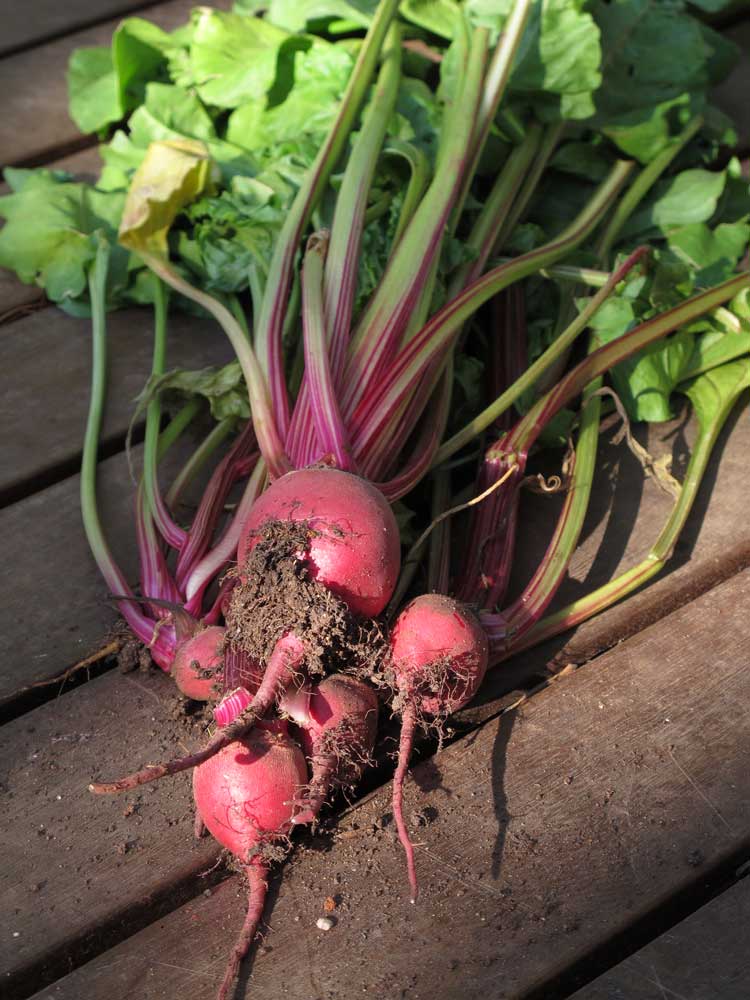
VARIETIES TO TRY
When growing beetroot, there are quite a few varieties to consider. The most common garden beetroot is a deep ruby red, however, there’s a surprising range available: Chioggia, is an heirloom variety with striking concentric purple and white rings.
Albino, as its name suggests, is white. It’s much sweeter than red beetroot, and not as earthy.
Detroit Dark Red is popular and reliable. Bulls Blood is one of the deepest red varieties you can grow. Cylindra is dark purplish red and cylindrical, ideal for preserving. Golden Globe produces glorious golden yellow round roots. Crosby Egyptian is a deep red variety with an unusual flattened shape.
READ MORE: Beetroot soup recipe
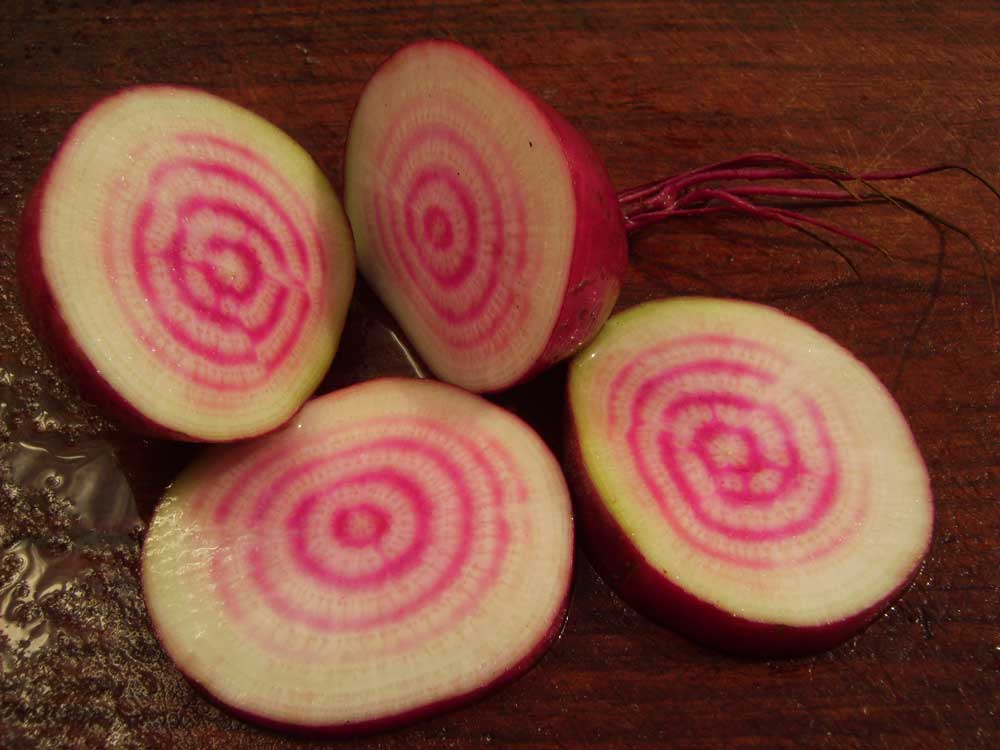
GROWING TIPS
- Beetroot can be grown almost all year round, but don’t sow seeds during the cold midwinter months as the roots will mature during the hottest time of summer and they’ll go to seed quickly.
- Beetroot plants like fertile, well-drained soil and consistent water. This encourages them to grow fast so the roots remain sweet and tender. Unlike most other root crops, they don’t mind being transplanted, provided the seedlings are small and keep moist during the process.
- They can also be sown in situ. The seed looks like a clump – it’s actually a seed cluster containing a few seeds.
- Once they germinate, they need to be thinned out to one plant, leaving enough space for the rest to develop healthy roots. They can be left to grow in clusters, providing they have enough space to spread out. The bright green and red baby leaves and shoots of the thinnings are delicious as microgreens.
- They don’t like competition from weeds, so control this by mulching.
- Beetroot grows well with beans, lettuce and most greens, as well as any members of the brassica family. It’s a good soil improver and addition to compost, as the leaves contain high levels of magnesium and other elements.
READ MORE: Bottled beetroot
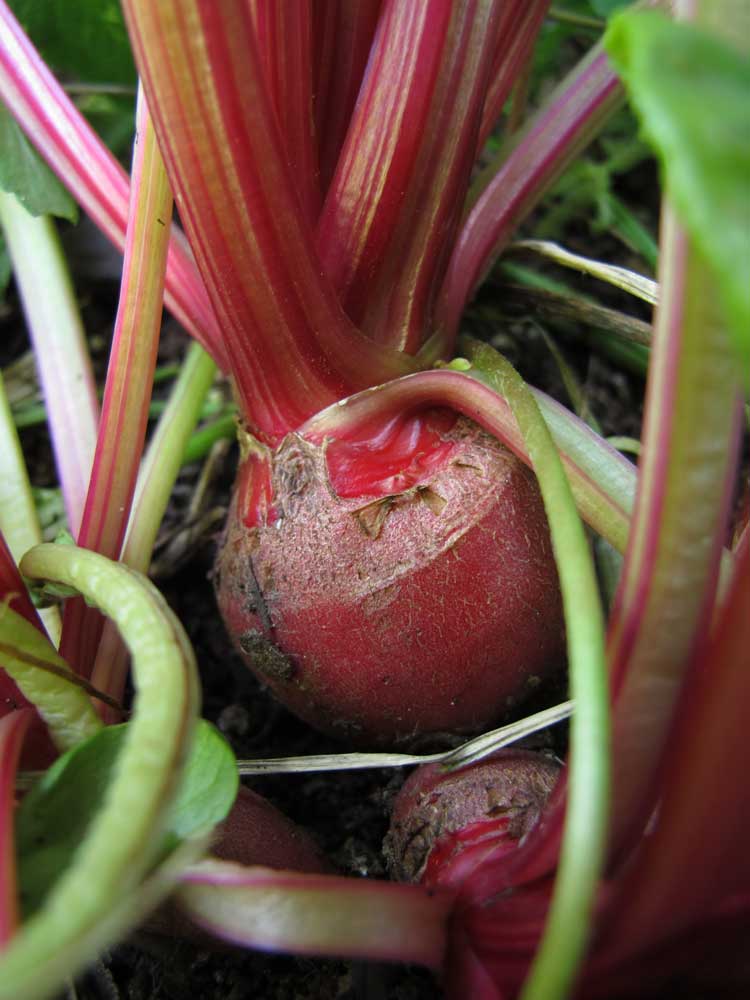
CARE AND MAINTENANCE
- Add a slow-release 2:3:2 organic fertiliser such as Talborne Vita-Grow when planting and top dress with
Vita-Green (5:1:5) when they are about six weeks old. - They don’t like dry weather and need regular moisture otherwise they can become stringy and tough. On the flip side, too much rain can also damage them. If it’s too wet, lift them before they rot, even if they’re small.
- Cutworms, birds, slugs and snails will all try and nibble your beetroot, especially when young, so protect
them accordingly.
READ MORE: BEEF FILLET STEAK WITH BEETROOT AND GOAT’S CHEESE DRESSING
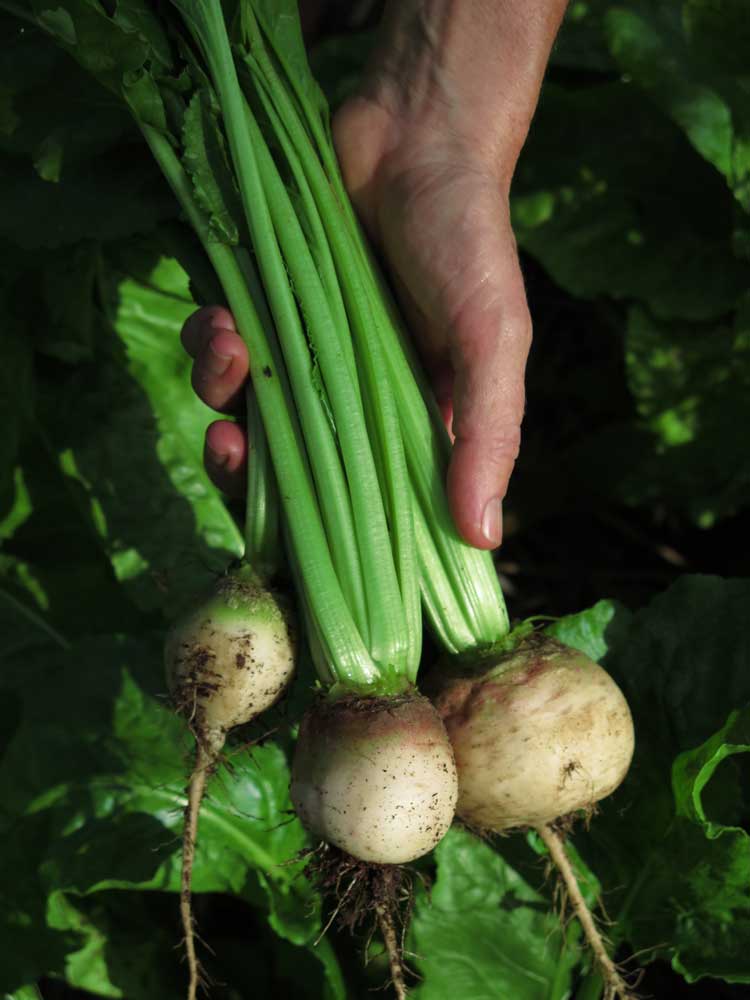
HARVESTING AND COOKING
Beetroot will be ready to harvest six to nine weeks after sowing. When harvesting, twist the leaves off immediately, otherwise they’ll continue to pull nutrients out of the roots. Baby leaves can be snipped off a few at a time and added to salads, and larger leaves used in stir-fries, stews and soups. As long as sufficient leaves remain to feed the plant, you will still be able to harvest the root.
Beetroot is tasty at all stages – from raw and crunchy, to being roasted until its flavours caramelise into something completely different. Although most recipes call for beetroot to be peeled,
I often don’t peel the small home-grown ones, as they’re so tender.
When cooking red beetroot, leave about 2–3cm of the stem attached to prevent it from leaching its colour. Cook them first (steam or roast) then peel the skin off (use gloves to prevent your hands being stained red). Yellow, white, and orange beets have a milder, nuttier flavour. Roast them with other veggies as they don’t stain everything red.
The roots contain significant amounts of vitamin C and the leaves are an excellent source of vitamin A. They’re also high in fibre and antioxidants. Beetroot is among the sweetest of vegetables, containing more sugar than even carrots or sweetcorn.
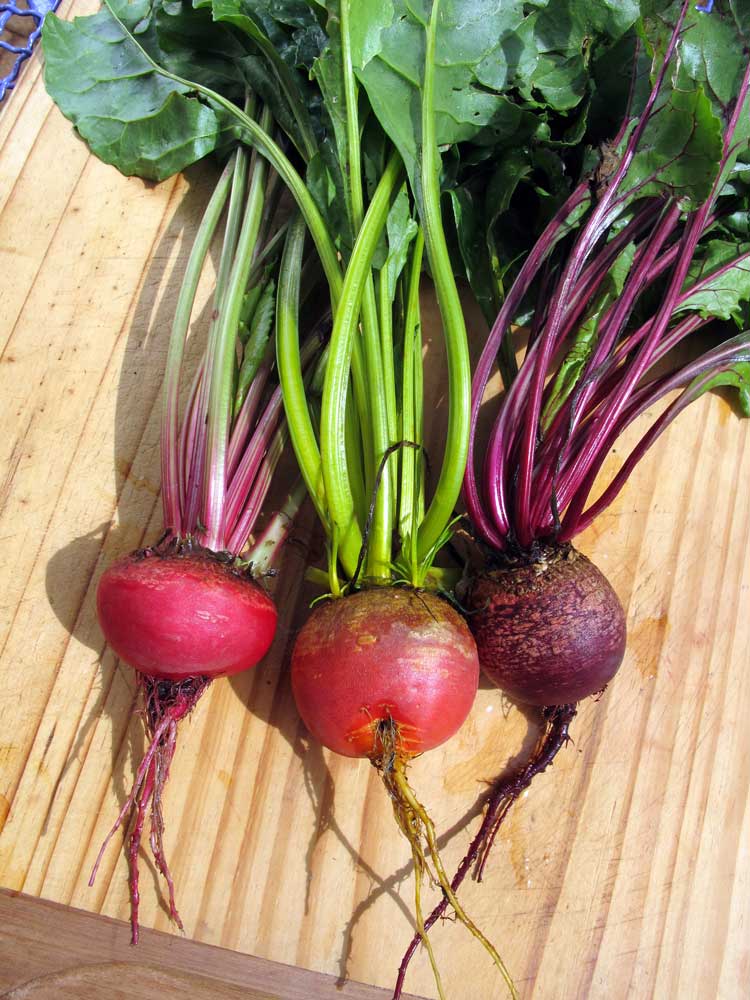
SAVING SEED
Beetroot will go to seed in hotter weather, forming tall spires with pointed heads that develop into clusters of seeds. Leave these to mature and dry on the plant and then harvest the stalk. Dry seed is easily rubbed off the stems. It’s wind pollinated, and unless isolated or bagged, will cross-pollinate.
Words by Jane Griffiths. For more, visit www.janesdeliciousshop.co.za.
Images by Jane Griffiths and Keith Knowlton

